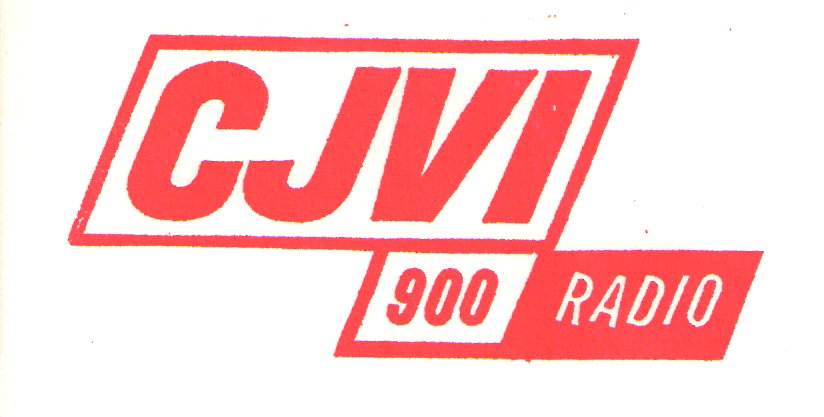
CJVI Page
1923
On April 1, Dr. Clem Davies of the Centennial Methodist Church opened CFCL on
410 meters with 500 watts of power.
1924
CFCL's studios moved from the church to the Fletcher Brothers store on Douglas
Street.
1925
CFCL changed to 910 kHz with 500 watts. CFCL carried on as a full-time
religious station until 1925 when Dr. Davies left the church. George Deauville
obtained a new license for the station, moved the transmitter downtown, changed
the call letters to CFCT, and began operating it as a commercial station. The
studios moved from the Fletcher store to the top floor of the Toronto Dominion
Bank building on Douglas St.
1928
CFCT switched from 910 to 630 kHz. Power remained at 500 watts.
1931
Studios moved from the TD building to the Central Trust building on View
Street.
1933
CFCT changed from 630 to 1430 kHz. Power was reduced to 50 watts.
1935
CFCT moved from 1430 to 1450 kHz with 50 watts.
1938
Listing: CFCT 1450 kHz 50 watts.
1941
On March 29, CFCT moved from 1450 to 1480 kHz with 500 watts. The Victoria
Colonist purchased CFCT on October 1, and
subsequently sold 50% to Taylor, Person & Carson Ltd., thereby forming The
Island Broadcasting Co. The Colonist was owned by Jim Matson and family.
TP&C managed the station. CFCT became CJVI.
1951
Taylor, Pearson & Carson Ltd. took control of CJVI.
1952
CJVI moved its transmitter site from Portage Inlet to Cedar Hill Road. Power
increased to 5,000 watts. Studios moved from the Central Trust Building to the
second floor of the Imperial Optical building at 817 Fort Street.
1957
CJVI increased power from 5,000 to 10,000 watts in April.
1959
Harold Carson died. Taylor, Pearson & Carson becomes Selkirk Holdings Ltd.
1963
Transmitting facilities moved to Strongtide Islet, off Oak Bay.
1964
Approval was given by the BBG in March to move the transmitter site.
1965
Selkirk Holdings becomes a publicly traded company.
1970
On December 31, Island Broadcasting Co. Ltd.
was given permission to transfer 150 common shares from Sussex Management
Associates Ltd. to Selkirk Holdings Ltd. This increased Selkirk's ownership in
CJVI from 75 to 100%. The management of Sussex was closely associated with
Selkirk.
1979
CJVI became known as “VI-90” on January 22.
1984
CJVI began broadcasting in stereo in January. CJVI dropped its long-time
country format for a mix of adult contemporary and nostalgia.
1985
A full-time adult-contemporary format was adopted.
1989
On September 28, the CRTC approved Maclean-Hunter Ltd.'s purchase of Selkirk
Communications and for the transfer of CJVI and several other stations from MH
Acquisition Inc. to Rogers Broadcasting Ltd.
1991
CJVI dropped its long-time affiliation with the CBC.
1997
CJVI-AM switched from an Oldies format to News/Talk on April 1. CJVI adopted
the slogan "AM 900, Victoria's Information Superstation".
2000
On June 30 the CRTC announced approval of an application by Rogers Broadcasting
to replace AM station CJVI with a new FM station to serve Victoria. The station
was licensed to operate on the frequency of 103.1 MHz with an average effective
radiated power of 9,400 watts (20,000 watts peak). The Commission had
previously denied the application because Rogers had proposed the same
frequency (107.3) as one approved for use by Seacoast Communications, which
made the proposal technically mutually exclusive.
Subsequently, Rogers and CKMO Radio Society (CKMO Radio) agreed that,
subject to Commission approval, they would exchange the frequencies currently
used by CJVI and CKMO-FM Victoria. CJVI operated on the frequency of 900 kHz
with 10,000 watts, while CKMO-FM had operated on 103.1 MHz as a low-powered
station with 50 watts.
On September 2 CJVI AM 900 signed off the air at 5:05 p.m. after over 78
years of continuous broadcasting. Minutes later, CHTT-FM "Hot 103 -
Today's Hit Music" signed on with 'N Sync's "Bye, Bye, Bye"
2004
At 4 p.m. on January 29, the station became “JACK FM”, starting off with ZZ
Top's “Sharp-Dressed Man”. "We felt it was time for Victoria to have
this kind of format," said vice-president and market manager Kim Hesketh.
Home: BC Radio History